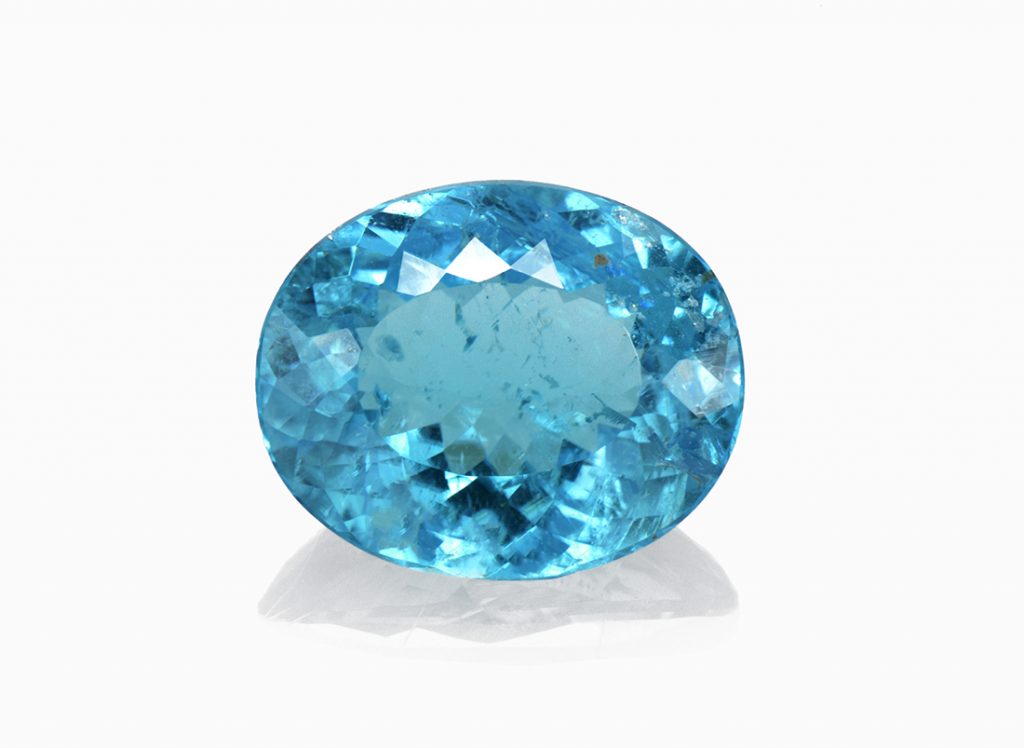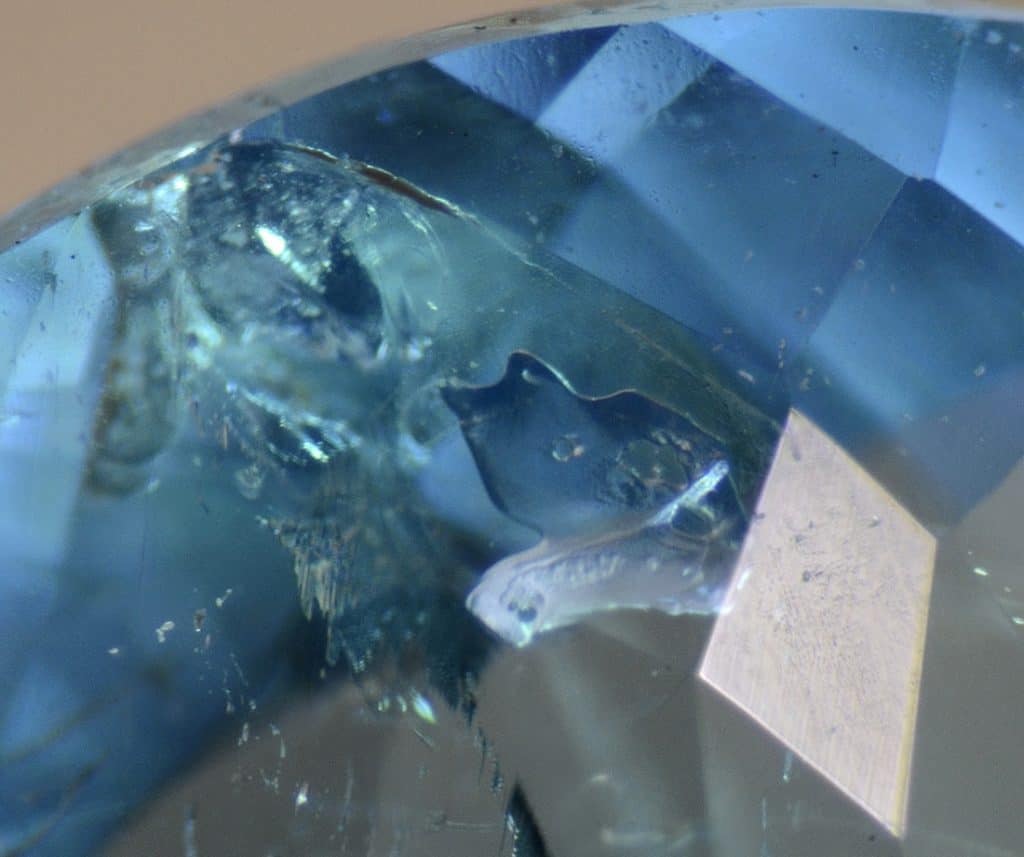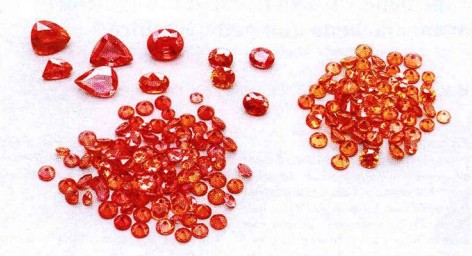
Fissure-filling in Paraiba Tourmaline

by Dr. Michael S. Krzemnicki first published in Facette 24 (February 2018)
Paraiba tourmaline is a highly attractive coloured stone, renowned for its range of vivid blue to green colours. Often, however, this rare copper and manganese bearing variety of elbaite tourmaline contains small fissures which may then reduce its clarity. This is especially true for material which is heated, as the heating creates new fissures and expands existing ones considerably. As with any gemstone with fissures, it is thus of no surprise that some of this fissured material is filled with a colourless foreign substance (mostly artificial resin) to modify and enhance its transparency and thus apparent beauty. Needless to say that such fissure filling has to be disclosed throughout the trade and to the final consumer (CIBJO trade rules) and is thus detailed in the comment section of SSEF reports.
We recently analysed a beautiful stone of approximately 3 ct size (Figure 1) and vivid blue colour, which turned out to be a perfect case study to expose this fissure filling in Paraiba tourmaline. Meticulous microscopic observation and spectroscopic analyses revealed that this tourmaline was heat-treated to modify its colour, a fact which is very common for most Paraiba tourmalines, although not always detectable by scientific methods. In addition, this tourmaline showed large fissures which were at first hardly visible. Under microscopic magnification, those fissures showed tell-tale features of artificial resin as filler, such as flat, sticky and structured air bubbles (Figure 2) and purplish-blue ‘flashes’ (Figure 3), very similar to ‘flash effects’ found in emeralds filled with artificial resin (Kiefert et al., Journal of Gemmology 1999; Kammerling Gems & Gemology 1995).
To reassure the trade, this treatment is not new and we further can say that we have not seen an increase of such material in our lab recently. When assessing/buying Paraiba tourmalines, such treatments need to be considered and tested for. Since many years, the SSEF applies very strict and consistent criteria for fissure filling quantification and identification in any gemstone, including Paraiba tourmalines, based on the LMHC harmonization and detailed in the last Facette No. 23, published in 2017.




